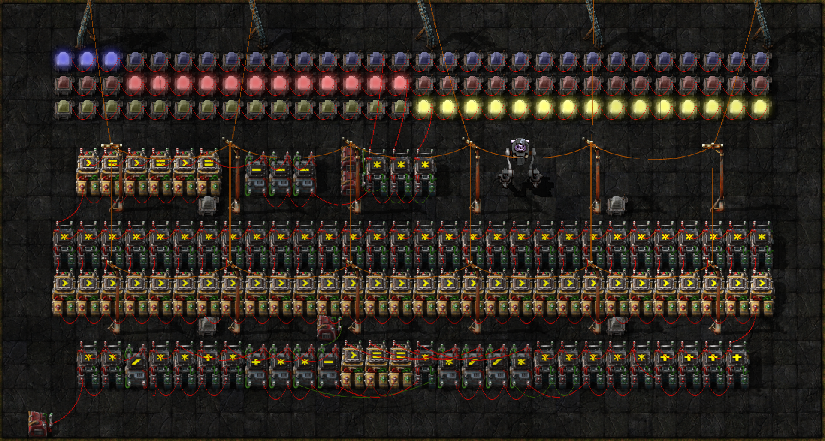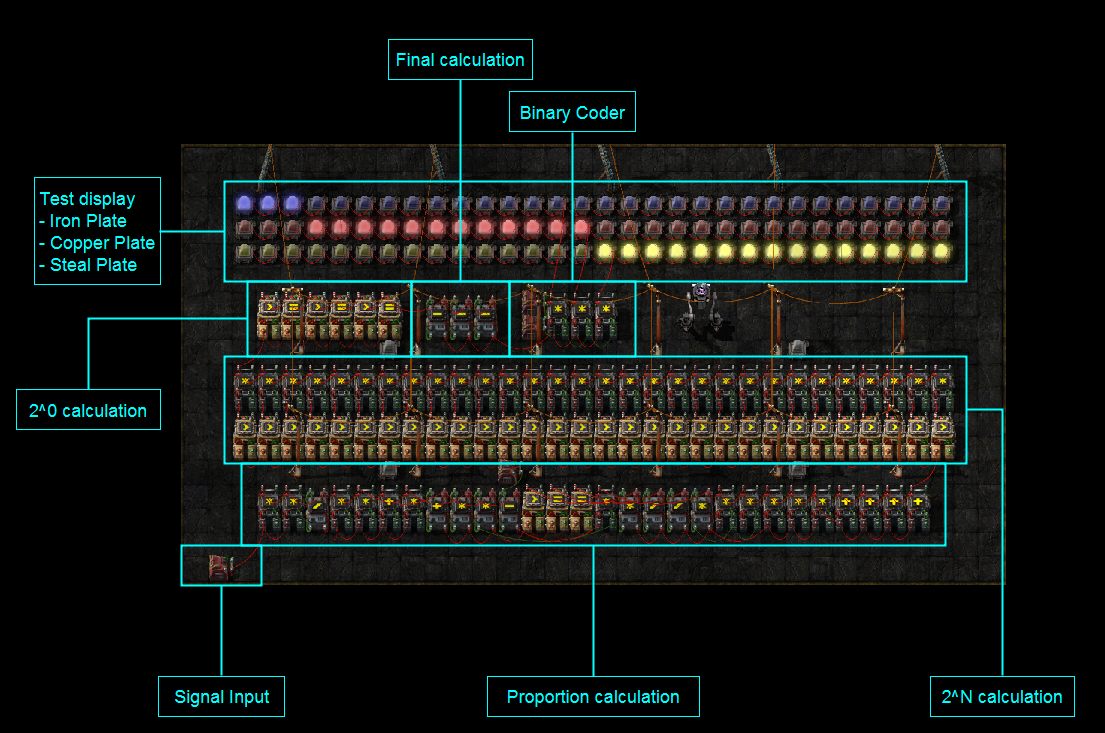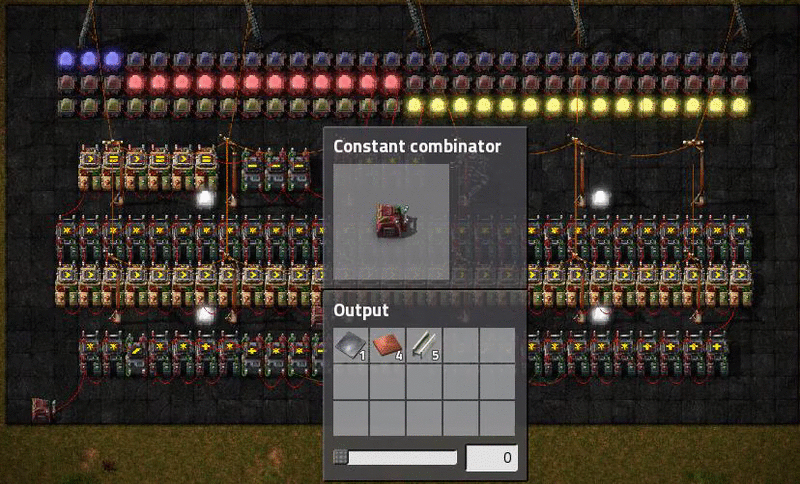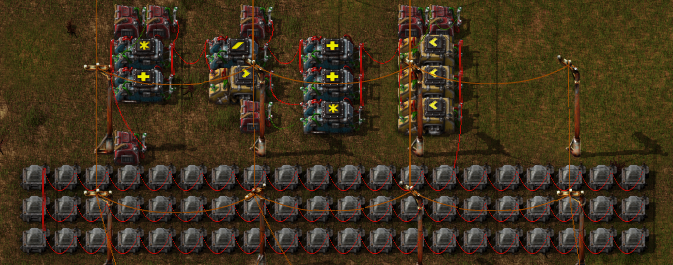Smart Furnace - load-balanced, demand-based, and tileable
Posted: Mon May 23, 2016 5:10 am
I've recently started a world in Factorio based exclusively around research and development (and at times, mad science). I figured I'd start showing some of the more interesting creations and concepts from that world.
The first one is my take on the idea of a smart furnace. I've seen a few smart furnace designs, but none of them were quite what I was looking for. My requirements were that it be demand-based, lean/efficient, precise, and tileable. What I came up with was a system that smelts exactly what you ask for (assuming you're asking for iron or copper plates) as long as the total demand doesn't exceed the total output of the furnace array. But when the demand exceeds the total output capability of the array, it will load balance, allocating the proper ratio of furnaces to each product. This means that in high demand situations, although the factory throughput may decrease, it will still be balanced, and everything should still be distributed in the correct ratio.
Here's a video of the system where I explain it and give a few demos:
https://youtu.be/UWGQ2QGlIqY
And, here are a couple of screenshots of it, one with details about what the circuits do.
Overview How it works
The first one is my take on the idea of a smart furnace. I've seen a few smart furnace designs, but none of them were quite what I was looking for. My requirements were that it be demand-based, lean/efficient, precise, and tileable. What I came up with was a system that smelts exactly what you ask for (assuming you're asking for iron or copper plates) as long as the total demand doesn't exceed the total output of the furnace array. But when the demand exceeds the total output capability of the array, it will load balance, allocating the proper ratio of furnaces to each product. This means that in high demand situations, although the factory throughput may decrease, it will still be balanced, and everything should still be distributed in the correct ratio.
Here's a video of the system where I explain it and give a few demos:
https://youtu.be/UWGQ2QGlIqY
And, here are a couple of screenshots of it, one with details about what the circuits do.
Overview How it works








